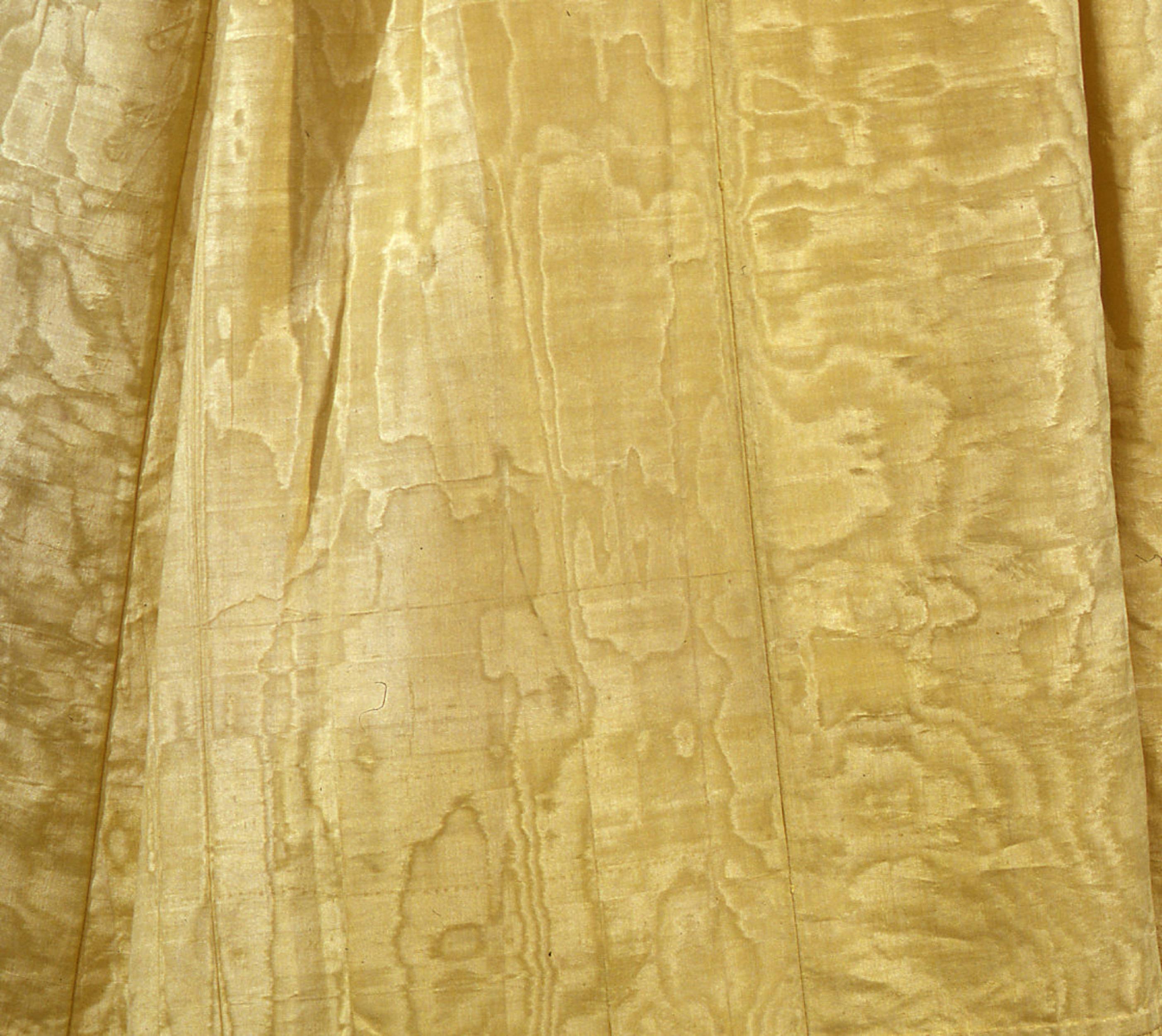Day dress
Italian production (Naples?)
The dress on display, in yellow silk taffeta worked with a moiré effect, represents an ideal example of the prevailing aesthetic canons of women's fashion in the Napoleonic era.
The type of sartorial construction allows to date it back to around 1810, a period that marked the return of silk and a stabilisation of the conception of women's clothing according to the stylistic canons dictated by the fashions of the imperial court, with a very high waist and slightly flared skirt. The presence of numerous traces of earlier folds might also suggest that the fabric belonged to an older, probably 18th-century garment, which was then reused to create a dress conforming to contemporary stylistic canons.
The marbled effect of the fabric was generally achieved through the use of rollers and high temperatures that compressed and flattened the warp of the fabric, thus creating an interesting play of iridescent effects.
By the last decade of the 18th century, at the peak of the revolutionary fervour, the artificial refinement and the excesses of Rococo fashion gave way to a taste for clothes characterised by simpler shapes and greater decorative sobriety. This reversal, marked by the abandonment of the cumbersome “architecture” of dresses that animated the splendour of the European courts, was characterised by the adoption of the more sober and less constrictive design of the so-called robe en chemise, typical of the Directoire style, namely a long petticoat-like dress inspired by the drapery of ancient Greco-Roman statuary, featuring a wide, squared neckline, a very high waist, balloon sleeves and a skirt of reduced width, designed to adhere to the shape of the female body and support its movements.
During the Napoleonic era, between 1804 and 1815, these trends in women's fashion remained almost unchanged, although there was a distinction between the more elaborate evening models, which were usually made of velvet or satin and enriched with metallic thread decorations, and the simpler day or morning models in muslin, tulle or crepe, which were white at first but progressively shifted towards the use of soft pastel shades. In particular, the use of silk, the production of which entered a crisis during the second half of the 18th century, became very common in the Napoleonic period, thus helping to revive its fortunes in the production of tapestries, clothes and accessories. The progressive simplification of the fashions of the previous century also entailed the abandonment of corsets, heels and especially wigs, which were replaced by shorter hairstyles characterised by the use of muslin, velvet or brocade tiaras or headbands, from which curls sprouted on the forehead and neck.
R. Orsi Landini, Materia e forme: tessuti e fogge del vestire femminile nei secoli XVIII e XIX , in Galleria del costume/4 , Centro Di, Firenze, 1990, pp. 11-15; C. Chiarelli, Abiti nella storia. Lo stile del vivere da Napoleone ai Demidoff , Sillabe, Livorno, 1998, pp. 7-15 ; Le collezioni. Costumi ed accessori dal XVIII al XX secolo , Sillabe, Livorno, 2000, p. 16.
